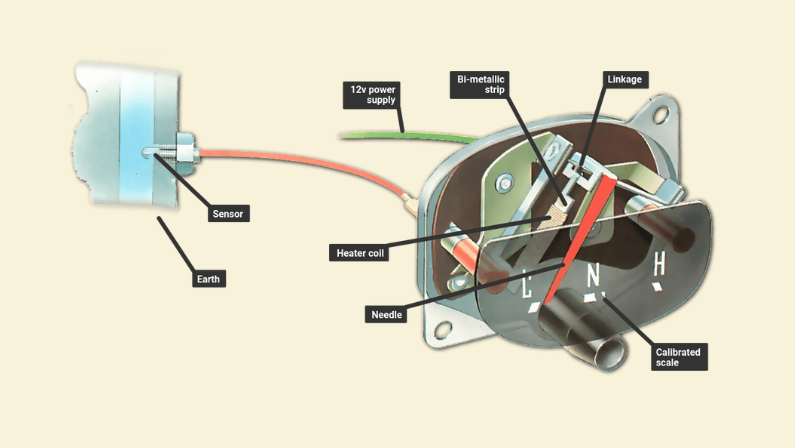Temperature Gauge Rising but Car Not Overheating? Possible Causes and Fixes
Posted on September 12, 2025
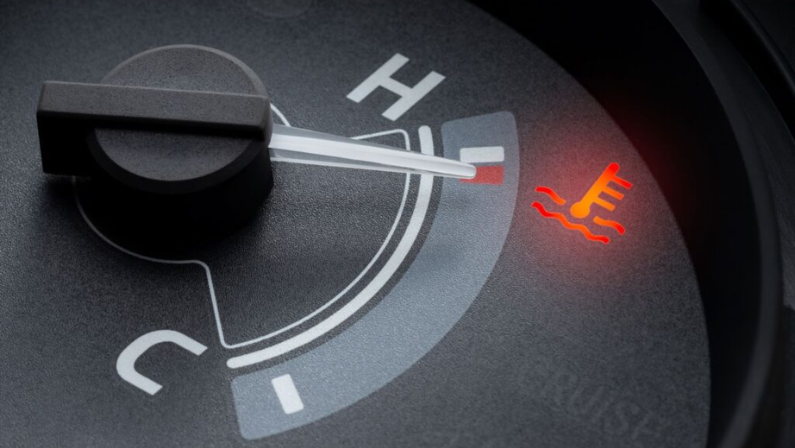
Few things are more unsettling than watching your car’s temperature gauge climb toward the red zone, only to find your engine feels perfectly normal. Is it a false alarm or a hidden problem waiting to escalate?
While a high temperature gauge reading could signal overheating, it might also indicate:
- A faulty coolant temperature sensor is sending incorrect data
- Low or contaminated coolant levels are disrupting readings
- A stuck thermostat is causing erratic gauge behavior
- Electrical issues or a failing temperature gauge itself
At CarHub North York Chrysler, we know how unnerving this discrepancy can be. In this guide, we’ll break down why your temperature gauge reads hot, but the engine stays cool, how to diagnose the issue, and when to seek professional help, so you can drive with confidence.
How Does the Car Temperature Gauge Work?
The temperature gauge in your car plays an important role in helping you monitor your engine’s health. It works by measuring the temperature of the engine coolant—a special liquid that absorbs heat from the engine as it runs.
Once the coolant picks up this heat, it flows to the radiator, where the heat is released into the air to keep the engine from getting too hot. A small sensor, often called the coolant temperature sensor, sits inside the engine and keeps track of the coolant’s temperature.
It sends an electrical signal to your car’s computer system, which then displays the temperature on your dashboard gauge. This system helps you see if your engine is running at a normal temperature, getting too hot, or not warming up properly.
Since temperature control affects fuel efficiency and emissions, the temperature gauge is also considered part of your car’s emissions control system.
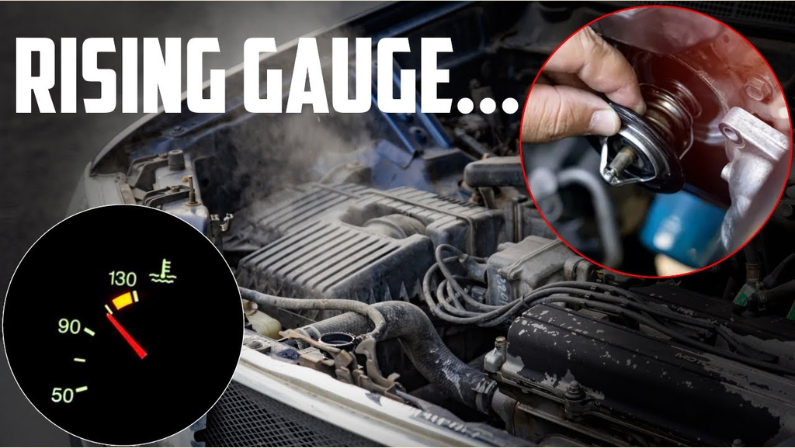
Possible Causes of a Rising Temperature Gauge Without Overheating
Sometimes your car’s temperature gauge may read higher than normal, even if the engine isn’t actually overheating. This could be due to minor issues or early signs of trouble within the cooling system.
Below are some common reasons why the temperature gauge reads hot, but the engine is cool:
1. Cooling Fan Malfunctions
Cooling fans help move air across the radiator to keep the engine cool. If these fans fail or don’t kick on when needed (especially when the car is idling or moving slowly), the engine can heat up more than usual. A malfunctioning relay, fuse, or fan motor could be the cause.
2. Faulty Radiator
The radiator is in charge of releasing heat from the engine via coolant. If it becomes clogged or develops internal damage, it won’t cool the fluid efficiently. This can lead to higher temperature readings even though the engine hasn’t reached dangerous levels yet.
3. Low Coolant Levels (But Not Yet Overheating)
Coolant helps regulate the engine temperature. If your coolant is low (due to a slow leak or evaporation), it can cause the temperature gauge to increase. It might not be enough to cause overheating yet, but it's a warning sign you shouldn't ignore.
4. Air in the Cooling System
Air pockets in the cooling system disrupt the smooth flow of coolant, creating "hot spots" and inaccurate gauge readings. Air can get into the system during a bad coolant refill or from a blown head gasket.
5. Collapsed or Clogged Hoses
Coolant flows through a series of hoses. If one is clogged, kinked, or collapsed, the flow is restricted, reducing cooling efficiency. This can cause temperature spikes even if the engine itself isn't overheating yet.
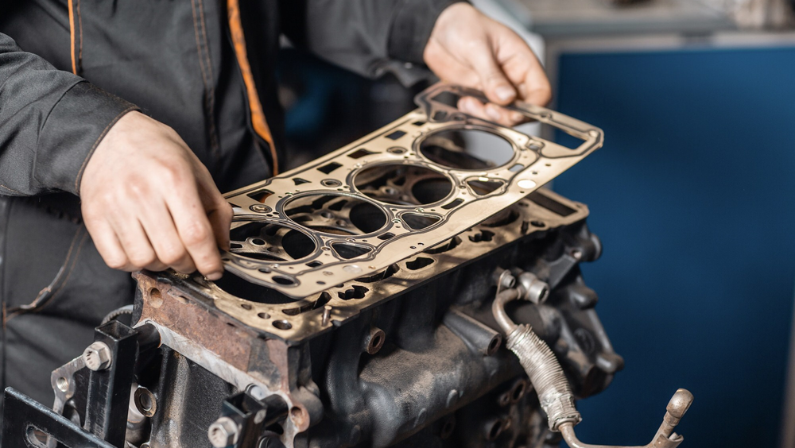
6. Damaged Head Gasket
A compromised head gasket can allow coolant to leak into the engine or combustion gases to enter the cooling system. This can increase pressure and temperature readings while the engine may still appear to function normally.
7. Broken Water Pump
The water pump circulates coolant throughout the engine. If it’s damaged or its impeller isn't working properly, the coolant won’t move efficiently. This can cause higher-than-normal temperature readings without immediate signs of overheating.
8. Stuck Thermostat
The thermostat controls when coolant flows through the radiator. If it gets stuck in a closed or partially closed position, it may prevent proper coolant circulation, causing the temperature gauge to rise.
9. Inoperative Temperature Gauge
Sometimes, the issue isn’t with the engine but with the gauge itself. A faulty needle, bad wiring, or a loose radiator cap can lead to false high readings. While uncommon, it’s worth checking if all mechanical components seem fine.
10. Overworked Engine
Towing a trailer, climbing steep roads, or hauling heavy cargo can cause the engine to work harder than usual. This increases its temperature and might cause the gauge to climb even though the engine is still within safe operating limits.
11. Faulty Temperature Sensor
The temperature sensor feeds data to the gauge. If it sends incorrect readings due to a fault, the dashboard might show a hot temperature even when the engine is actually cool. Replacing the sensor often solves this issue.
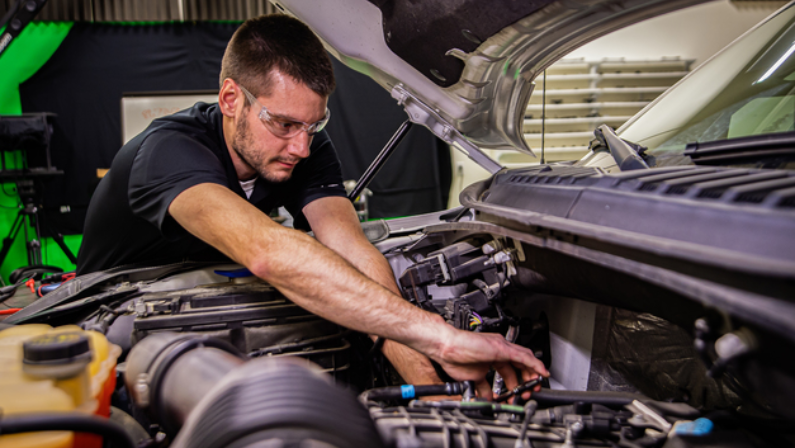
Solutions to Address the Car Temperature Gauge Issue
If your temperature gauge is rising but the car is not overheating, there are several possible fixes depending on the root cause. It’s essential to pinpoint the exact issue so you can avoid potential damage to your engine or unnecessary repairs.
Below are common solutions that can help resolve rising temperature readings without actual overheating:
1. Replace a Faulty Temperature Sensor
The temperature sensor is responsible for relaying coolant temperature to the gauge on your dashboard. If it’s damaged or malfunctioning, it can send false readings that make the gauge appear hot when the engine isn’t.
A faulty sensor should be replaced promptly. If you're handy with car repairs, you can do it yourself following the proper steps, but a mechanic can also take care of it quickly.
2. Test the Thermostat and Replace if Stuck
A thermostat regulates the flow of coolant through your engine. If it’s stuck closed, coolant can’t flow properly, causing the engine to run hotter. If it’s stuck open, your engine may stay too cool, which can also confuse the temperature gauge.
In both cases, the thermostat should be tested and replaced if it’s not opening and closing as it should. This is a fairly straightforward repair that can prevent bigger cooling issues.
3. Check the Temperature Gauge and Electrical Wiring
Sometimes the issue isn’t mechanical but electrical. Faulty wiring, poor connections, or a damaged temperature gauge can cause inaccurate readings.
Inspect the wiring connected to the temperature sensor and gauge for any visible damage or loose ends. Also, ensure the radiator cap is secured properly, as this can impact pressure and the sensor’s accuracy.
4. Top Up Coolant if Levels Are Low
Low coolant is a common reason for unusual temperature gauge behavior. If your coolant level drops too much, it can’t absorb and transfer heat effectively. Make sure to top up the coolant to the recommended level.
Use the right type of coolant as specified in your owner’s manual, and avoid mixing in too much water, which reduces its effectiveness.
5. Bleed the Cooling System to Eliminate Trapped Air
Air pockets in the cooling system can block coolant flow and cause false high readings on the temperature gauge. These airlocks typically happen after a coolant change or due to a leaking head gasket.
Bleeding the system removes trapped air and restores proper coolant circulation, helping stabilize the gauge reading.
6. Inspect the Radiator and Water Pump for Wear or Damage
The radiator and water pump are key to cooling your engine. A worn-out water pump can fail to circulate coolant properly, and a clogged radiator can reduce heat dissipation.
Look for signs like leaks, corrosion, or overheating. If you notice any damage or malfunction, these parts may need to be flushed, repaired, or replaced to ensure smooth operation.
7. Follow Regular Maintenance to Avoid Future Issues
Routine maintenance goes a long way in preventing temperature gauge problems. This includes checking coolant levels, inspecting hoses for clogs or leaks, replacing coolant at regular intervals, and ensuring sensors and electrical systems are in working order.
By staying ahead of small issues, you can avoid unexpected gauge spikes and keep your engine running efficiently.
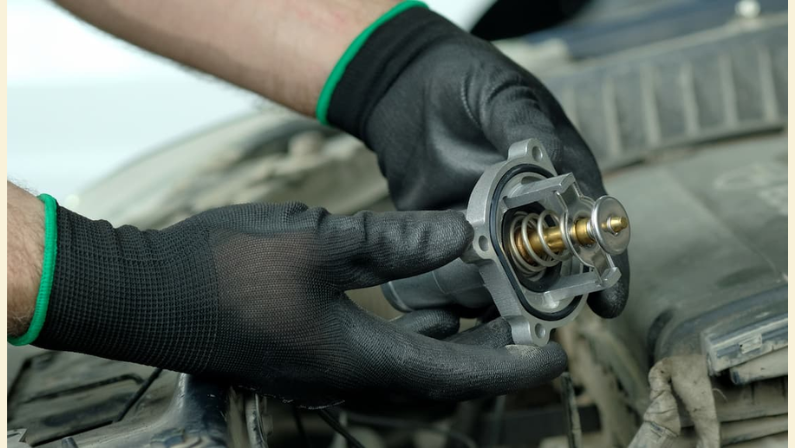
Signs that the Temperature Gauge Needs Repair
A malfunctioning temperature gauge doesn’t just give inaccurate readings—it can also lead to deeper issues like poor fuel efficiency or undetected engine problems. Knowing the warning signs can help you act early and avoid more costly repairs.
Here are some common indicators that your car's temperature gauge may need repair or replacement:
1. Erratic Readings
If the temperature gauge needle is constantly jumping up and down without settling, it’s a clear sign that something’s wrong. These rapid fluctuations could point to a wiring issue, a failing sensor, or a damaged gauge.
2. Stuck Needle
A needle that stays fixed in one position (especially if it’s stuck in the red zone or doesn't move at all) usually indicates a faulty gauge or a broken internal component. This makes it impossible to monitor your engine’s temperature accurately.
3. Consistent Low Readings
If your temperature gauge consistently shows unusually low temperatures while driving, it might not be reading the coolant temperature correctly. This could be due to a stuck-open thermostat or a malfunctioning sensor, both of which should be addressed.
4. Sudden Drops to Cold
After your engine warms up, the gauge should reflect a stable temperature. If the needle suddenly drops back to cold while idling or moving slowly, there might be a sensor or gauge issue affecting the signal.
5. Unexplained Poor Mileage
In some cases, a faulty temperature gauge can impact how your engine’s computer controls fuel delivery. If your car is burning more gas than usual and you’re seeing strange gauge behavior, they could be connected.
6. Loose Radiator Cap
While not a direct gauge issue, a loose or improperly sealed radiator cap can cause fluctuations in pressure, which may lead to inaccurate temperature readings on your gauge.
If you notice any of these symptoms, it’s best to have your vehicle checked by a qualified mechanic. Catching a temperature gauge issue early can help protect your engine and maintain your vehicle’s performance and fuel economy.

Preventive Measures to Avoid the Car Temperature Gauge Issue
Taking care of your vehicle’s cooling system is one of the best ways to prevent temperature gauge issues and avoid unexpected breakdowns. Regular maintenance and small proactive steps can go a long way in keeping both your engine and temperature gauge functioning properly.
Here are some key preventive measures to help you stay ahead of potential problems:
1. Coolant System Flush
Over time, engine coolant can degrade and become contaminated with rust, debris, and other particles. This reduces its ability to regulate temperature effectively. Flushing the coolant system every 2–5 years or as recommended by your vehicle’s manual helps maintain optimal cooling and prevents sensor or gauge issues caused by dirty coolant.
2. Radiator Check
Your radiator plays a critical role in heat dissipation. Regularly check it for signs of external leaks, internal clogs, or bent fins. Cleaning off leaves, bugs, and debris stuck in the radiator fins helps ensure efficient airflow and cooling. A damaged radiator should be repaired or replaced to maintain proper engine temperature.
3. Regularly Inspect Hoses and Clamps
Cracked hoses or loose clamps can lead to coolant leaks and restricted flow, affecting your engine temperature and gauge readings. Inspect hoses for swelling, cracks, or softness, and ensure clamps are tight and rust-free. Replacing worn components early helps prevent larger issues later.
4. Maintain Proper Coolant Level
Low coolant is a common cause of temperature irregularities. Always check the coolant level in the overflow reservoir and top it off if it drops below the minimum mark. Make sure the system isn’t overfilled either, as that can also cause problems.
5. Use the Correct Coolant
Not all coolants are the same. Using the wrong type can reduce the efficiency of your cooling system and lead to buildup or corrosion. Always refer to your vehicle’s owner’s manual to ensure you're using the correct coolant blend for your engine.
6. Monitor Temperature Gauge
It’s good practice to keep an eye on your temperature gauge while driving. If the needle begins to consistently rise higher than normal (even if it’s not in the red zone), it’s a sign to check your system before a real overheating issue occurs.
7. Minimize Stop-and-Go Driving
Frequent stop-and-go traffic can create excess heat and put strain on your cooling system, especially in warm weather. When possible, avoid heavy traffic or long idling periods to reduce wear on your engine and cooling components.
8. Address Leaks
Even small leaks in the cooling system can reduce coolant levels and pressure, leading to rising engine temperatures. If you notice drips under your car or a sweet smell from the engine bay, have your vehicle inspected right away to locate and repair the leak.

Don’t Let a Faulty Temperature Gauge Spoil Your Ride
A temperature gauge that reads hot while your engine stays cool isn’t just confusing—it’s a warning. Whether it’s a failing sensor, low coolant, or a stuck thermostat, addressing the issue early can prevent costly damage and keep your drives safe.
Need help diagnosing the problem? At CarHub North York Chrysler, our certified technicians specialize in:
- Precision diagnostics for accurate temperature gauge issues
- Cooling system inspections to prevent overheating risks
- Expert repairs on all Chrysler, Dodge, Jeep, and RAM models
Don’t wait until it’s too late! Schedule Your Cooling System Check Today or call now: 1 (877) 849-8734
For more car care tips, explore our Blog or visit us at 7200 Yonge St., Thornhill, ON, L4J 1V8. Let’s keep your engine running smoothly without guesswork!

